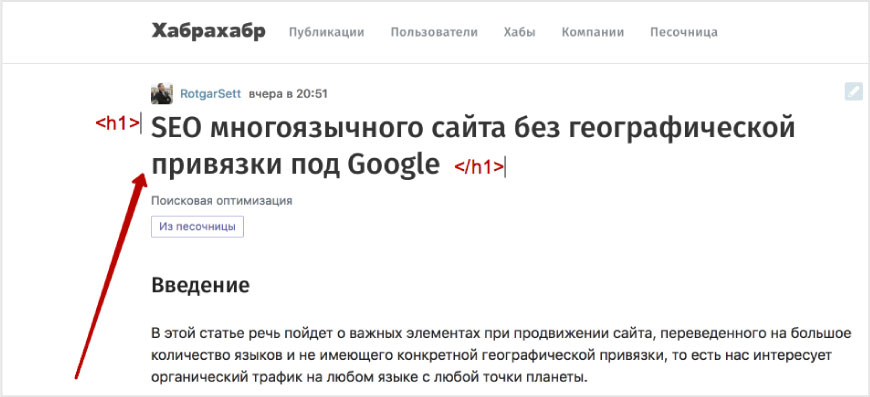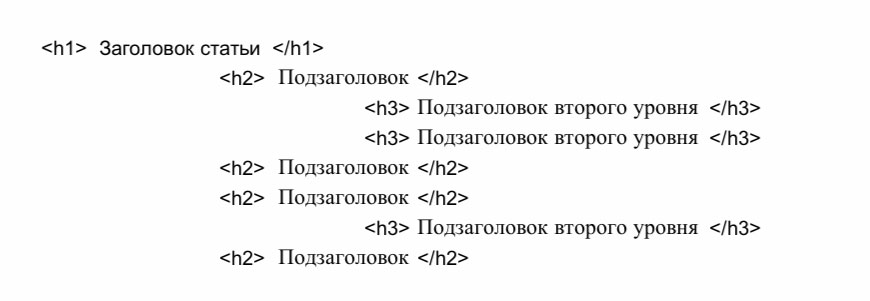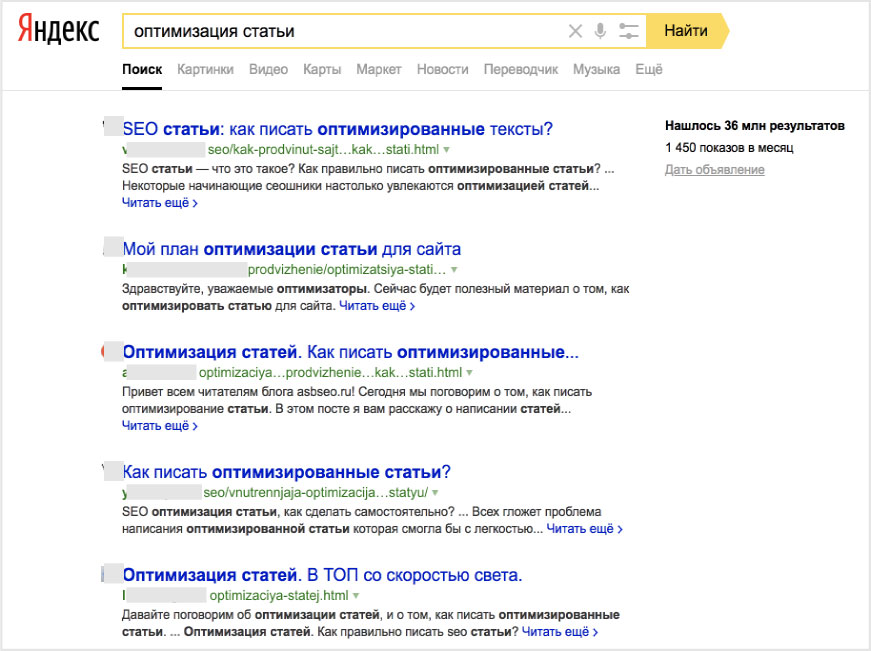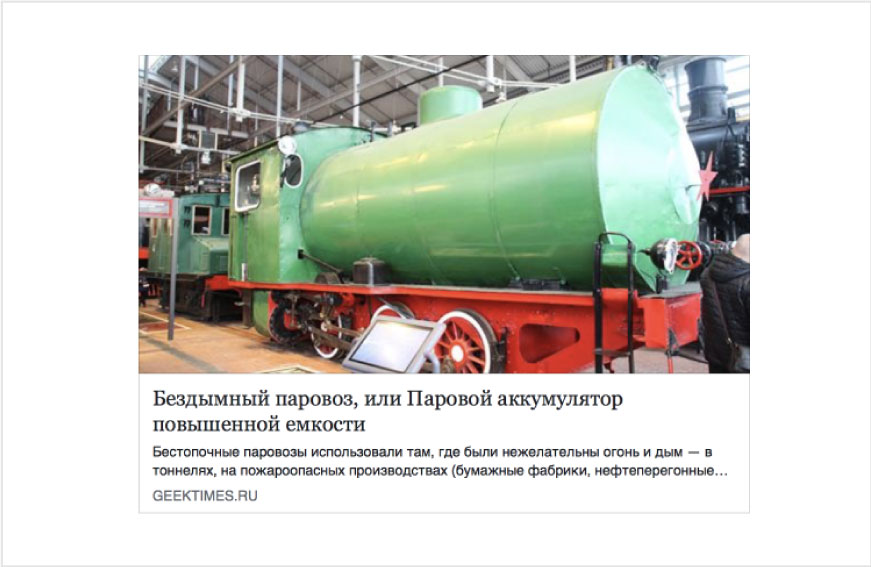SEO article optimization: actual plan
Caution! Longrid
It's about optimizing the article page for search engines. This material is more suitable for promotion in Yandex.
Especially for Habrovtsev, in conclusion there is a list of all sections applicable to Habrastatyam.
04/27/2018 UPD // This page is already in Yandex TOP "article optimization". And in the top of Google.

The purpose of the article is to visually show how the content works and, if we see this page in the top of Yandex by the query “ article optimization ”, then everything is done right and the article is relevant.
- URL
- Semantic highlighting
- Analysis of competitors in the issue
- Variety of content
- LSI Copywriting - Synonyms and Search Tips
- CTR with search - header and snippet
- Social lock, push notifications and subscriptions
- Article micromarking
- Links to trust sources
- mobile version
- Perelinkovka
- Comments
- Text volume, nausea and other useless parameters
- The uniqueness of the article
- Check list
- Conclusion
SEO optimization of an article is the optimization of the information page of the site in order to appear in the top search engine results for interesting queries.
URL
Let's start with the very top and simplest - the URL of the article page.
When forming it, you should follow several rules:
- The shorter the better;
- Only CNC ;
- Keywords in urla.
The correct URL for this page would look like this:
http://habrahabr.ru/post/seo-optimizaciya-stati/
There is no need to worry about transliteration itself, there are many services that allow transliterating a phrase.
Unfortunately, CNC cannot be made on Habré, so the URL factor in this experiment will not give a plus.
Each page must have a unique address (URL). It is desirable that the type of URL gives an idea of what is contained on the relevant page. The use of transliteration in the page addresses will also allow the robot to understand what the page may be about. For example, only one URL http://download.yandex.ru/company/experience/Baitin_Korrekciya%20gramotnosti.pdf gives the search engine a lot of information about the document: you can download it; the format is most likely PDF; the document is probably relevant to the request “literacy correction” and so on.
')
Semantic highlighting
Headlines
Be sure to use h1-h6 header tags.
There should be only one h1 header on the page and it should be at the very top of the page.
The h1 header should contain the main key request; you can break the key into parts. Write the title short and understandable to the reader.

Properly use header tags with the following structure.

Phrase selection tags b, i, em
Phrases and words in the text should be marked with b, i, em tags only if it helps the reader to pay attention to important parts of the text.
It is also important to note that the semantic allocation tags in the article should be used for individual words and short phrases , but it is better to select whole sentences and long phrases using the blockquote tag, we will talk about it below .
HTMLbook :
In HTML 4, there is a difference between the b and strong tags. The first tag b is the tag of the physical markup and sets the bold text, and the tag strong is the tag of the logical markup and determines the importance of the marked text. This division of tags into logical and physical formatting was originally intended to make HTML universal, including independent of the output device.
At the moment, search engines do not take into account the difference between the tags of the physical and logical markup.
Analysis of competitors in the issue
In order to understand which elements are required and which can be used as an advantage, it is necessary:
- To drive a query of interest to us in the Yandex search line, in this case, “SEO article optimization”;
- We open the first 5 issue sites, of course, skipping the Yandex.Direct advertising links;
- Analyzing the articles of competitors;
- We select the necessary elements and possible competitive advantages in content.

| 1 place | 2nd place | 3rd place | 4th place | 5th place | |
| Semantic highlighting | + | + | + | + | + |
| Video | - | + | + | - | - |
| Pictures | + | + | + | + | + |
| Tables | - | - | - | - | - |
| Lists | + | + | - | + | + |
| Quotes | + | + | - | - | - |
| Links to trust sources | + | + | - | - | - |
| Content | + | + | - | + | - |
Obviously, pages with lots of important elements are ranked better.
- Nobody uses the table tables, which means that I definitely need to insert a table in this article, since this can be a competitive advantage;
- The video is used in just two articles and they are close to TOP, so I will make a video, the more it fits well into one of the sections;
- In the first and second places in Yandex, articles in which the blockquote citation tag is used several times, therefore, I believe that it is mandatory to use;
- The sites in the top have content and outgoing links to trust sources, take these points into service.
The full checklist is at the end of the article .
Diverse content
Yandex really likes it when information is submitted using different types of content; this is often very useful for users. Therefore, we try to design the text of the article beautifully, structured and informative, using:
Lists
Mark your lists correctly using the ul and ol html markup .
Pictures
The article is very useful for both users and search engines to insert images. The most important thing is that the pictures are useful for users, and it is also desirable that they be unique.
Easy ways to make unique images:
Do not forget to register the attributes alt and title to the posted pictures.
- YouTube video screenshot
- Twisting, stretching, changing the proportions of already indexed images, for maximum uniralization use Photoshop and its ability to edit metadata
Video
It is not always possible to organically insert a video into an article, and also not on every topic is easy to do, however, a good, informative video will bring many benefits, including helping to improve page properties taken into account when ranking.
Tables
Like lists, I recommend using html table layouts using the table tag, rather than posting them in pictures.
Quotes
Quotes that I have already mentioned several times and used in this article. Often they will be your competitive advantage in terms of content diversity.
In HTML, there are several tags to indicate quotes:
blockquote - designed to highlight long quotes within the document. The text marked with this tag is traditionally displayed as an aligned block with indents to the left and to the right, as well as jabbing above and below.
q - used to highlight short quotes in the text. The contents of the container are automatically displayed in quotes in the browser.
cite - The address that indicates the source of the quote.

Abbreviations
If you use abbreviations in the text, it will be useful to decipher them using the abbr tag.
LSI Copywriting - Synonyms and Search Tips
When writing articles, you should rely on the basic requirements of LSI-copywriting.
The use of synonyms and analysis of search tips greatly expands the semantics of your article and allows you to more fully disclose the issues of concern to users, thereby indirectly affecting the ranking:
- Improving behavioral factors;
- Growth in the number of social signals;
- Greater relevance to requests.
So, we look at what requests and tips we can extract from WordStat . After analyzing all the information, we obtain the following results:
Requests
- article optimization
- SEO article optimization
- search engine optimization articles
- SEO article optimization
- promotion of the article in Yandex
- seo article promotion
Tips
- article optimization for the site
- optimization of the article for search queries
- seo article optimization this
- seo article optimization examples
- SEO article optimization example
- promotion of articles by keywords
- article optimization for the site
I will try not to shove, but to diversify the text where it looks organic, with the queries and hints given above. I will use phrases only as synonyms and not necessarily in one line, that is, phrases can be broken down into parts.
Inquiries containing the abbreviation "seo" in Russian, I will not use, because I think that it is more important to take care of the reader, rather than semantic fullness.
CTR with search - header and snippet
It is very important to remember about behavioral factors. In this part of the article I will draw your attention to such an important indicator of the PF as the CTR from the search. This is an indicator reflecting the frequency of clicks on a link to your website from the Yandex search results page, and it greatly affects the ranking. It can be improved on the article page in several ways:
- Optimization of the Title and meta-Description of the page (or the part that Yandex displays under the title in the snippet);
- Using emoji in the text under the snippet title;
- Micromarking of the article;
- Micromarking bread crumbs site.
Micromarking breadcrumbs:

This is not a complete list of how to influence the snippet, but sufficient in the context of article optimization.
Emoji in Google SERP :

Emoji in Yandex SERP :
Yandex displays Emoji in the url structure in the snippet

Unfortunately, Habr doesn’t display emoji, it doesn’t allow me to make a micro-markup, so I only have the title, which is also the title of the article page
So, proceed to the title.
Firstly, SEO is always moving and most readers of such articles know this. Accordingly, they are interested in relevant information.
Secondly - exclusively in my opinion, people who drive a request that interests me are looking for exactly a plan or a manual , and not an abstract scribbling on the topic of article promotion. The word "Plan" is closer to me, so I use it.
In the third - I use the SCH request which includes the HF request in my subject.
I receive:
" SEO article optimization: actual plan "
Social lock, push notifications and subscriptions
On the article page there must be buttons to “share” all social networks that your target audience uses.
Social lock is a very useful tool that hides content, promo code or any information interesting to the user. In order to see the hidden content, you need to share the page on the social network by clicking on one of the proposed buttons. It turns out that the user likes or retweets your page, and in return receives interesting, funny or useful content.
Despite the expectation of negativity from the users, the experiments on the promo code for free delivery in the online store for the repost, like to see the "anecdote of the day" on the article resource, gave an undoubtedly positive result.
An example of a social castle:

I will mention about Push-notifications and E-mail subscriptions on the site, as I consider these elements necessary for article resources in many cases. Both tools can be perceived by someone as spam, but for some of the audience it will be very useful. More information about the "guns" can be found in this Habrastiati .
Push notification example:

Article micromarking
Shema.org Article
Shem's micromarking has a positive impact on the promotion of the article, and the site as a whole. For articles, the Article scheme is used. There is nothing difficult in the implementation of markup, but it can give a more structured and readable snippet.
You should mark all the media content used in the article by the MediaObject markup.
Open graph markup
This type of semantic markup is used by Facebook, Vkontakte, Google+, Twitter, LinkedIn, Pinterest and other services.
In the context of the article, the OG microdata can be used to make the post attractive for your social network article.
Transitions from social networks with good FFs have a very positive effect on the ranking of the article. Therefore, if your articles are divided, for example, in Facebook, then the right step would be to make the preview as efficient as possible by micromarking and increase the number of transitions. A post with an open graph will look much more attractive and there will be much more transitions from it than from a post without markup.
It will be useful to mark the video content. Yandex using Open Graph transfers data to its Video service, therefore, in order to increase the probability of getting traffic from there, we make a microdata .
For example, GeekTimes uses OG markup and, when clicking on “share on social networks,” we get:

For what else the semantic micromarking is used, you can read in Habrastiat Yandex .
Links to trust sources
Since ancient times, it was believed that external links from the page have a negative impact on the promotion. Once upon a time it was true, but in the current realities external references to authoritative resources are more likely to be beneficial and certainly not harmful. If you look at the sites of competitors in the TOP issue for information requests, you can see that many have links to Wikipedia and other reputable sites.
mobile version
The share of searches from mobile devices is growing rapidly, so it is imperative that the article look good when viewed from a phone or tablet. Including, it is worth remembering AMP for Google and Turbo pages for Yandex. From experience, it can be said that both provide some plus in the traffic on the site as a whole. Moreover, the official Google mentioned that AMP makes pages mobile-friendly and, as a result, may affect the ranking.
Yandex.Webmaster :
Search engines improve search results for mobile device users (smartphones, tablets). Such users will most likely be shown a site with an adaptive design, dynamic page layout, a mobile version of the site or a Turbo page.
Perelinkovka
Do not forget about internal linking if you want the article to be in the top. It is very good if the linking is arranged within the entire site and, in every article, with the natural mention of other material, there was a link to it. It should be remembered about linking the “related articles”, “best articles” and so on. About this Habr took care of me.

This article provides navigation through sections through the content and in some places from the text.
Comments
Additional unique content and regular updating of the page through reader comments. All of this is a great resource for improving page ranking options. Be sure to add the ability to comment on your articles.
There are a large number of plug-ins for comments on almost all known popular CMS , in most cases, you can choose the appropriate option from ready-made solutions. There are also various convenient external solutions.
Respond to comments on your article to motivate users to continue the conversation. Answering questions on the topic of the article, you add more topical information to the page and, possibly, disclose questions that you have missed.
I would not recommend buying comments, as they are extremely rarely informative. But, as an option, if you have little traffic on your site, then you can write several comment texts yourself and post them within a week or two on behalf of other users, and then deployed to answer each one.
Text size, nausea and other delusional parameters
Do not pay attention to such parameters as text volume, nausea, keyword density. Yandex at this stage of development is already smart enough to operate with more significant ranking factors that are artificially difficult to influence artificially. The most important thing for us is the behavioral factors; as a result of this, all the above “delusional” parameters are replaced with one actual concept - texts for people. It is necessary to write interesting, informative and pleasant to read texts, filling them with diverse, useful content for users. Thus, we will improve behavioral factors to the maximum, depending on the content of the article.
The uniqueness of the article
In order for search engines to know that your article is original, we inform them about it. For Yandex, we use the tool from the webmaster's panel. Original texts , and for Google from the Search console, send the url with the new article for indexing.
Yandex.Webmaster :
For one site you can add up to 100 texts per day.
Check list:
The table below can be copied and put in the empty cells on the left notes and comments.
| URL | ||
| Transliterated | ||
| Short | ||
| Keywords are used | ||
| Semantic highlighting | ||
| H1 header used once | ||
| The h1 header contains the RF request, it is logical and reflects the essence of the article to the user. | ||
| H2-h6 captions are used to structure the text | ||
| The header structure is correct. | ||
| Used tags selection b, i, em | ||
| Meaning tags are used in the case, not spam | ||
| Analysis of competitors in the issue | ||
| Compiled list of items used by competitors | ||
| Compiled a list of items that competitors do not use | ||
| A list of possible benefits | ||
| Variety of content | ||
| The maximum possible advantages in terms of content diversity are used. | ||
| Tables have a caption tag. | ||
| The pictures have alt and title attributes. | ||
| Lists are made using ul, ol tags | ||
| Used quotes | ||
| Abbreviations decoded with abbr tag | ||
| LSI Copywriting - Synonyms and Search Tips | ||
| The text is meaningful. | ||
| The text is structured, divided into paragraphs. | ||
| The article is well read. | ||
| Used synonyms | ||
| The text answers a maximum of questions on the topic. | ||
| CTR with search - header and snippet | ||
| The page title contains an RF request close to the beginning or at the very beginning. | ||
| Title length is about 70 characters, preferably not more. | ||
| Title is logical, understandable and stands out among competitors | ||
| The meta-description of the page is full, contains key queries | ||
| Is it possible to put Emoji | ||
| Is the bread crumbs microdata configured? | ||
| Social lock, push notifications and subscriptions | ||
| Is it possible to put a social lock, is it configured | ||
| Is it possible to configure push-notifications and subscription to the newsletter, are they configured | ||
| Sharing buttons on social networks are set | ||
| Article micromarking | ||
| The markup of the Shema.org Article and MediaObject is implemented and validated by validators in both search engines. | ||
| Markup Open Graph implemented and tested | ||
| AMP Google | ||
| - | ||
| " ", " " | ||
| Comments | ||
| Google Search Console | ||
Conclusion
Practically for each item you can write a separate article, so in some questions the trivial parts are omitted and more attention is paid to things that many people forget about. And, nevertheless, there are simple, but important points that are covered rather deeply.
It is important to try to describe all the issues related to the topic of the article, at least in the minimum form and to maximize the perception of the text by users by structuring the text, highlighting important points and choosing the right type of information presentation.
It is worth noting that the impossibility of applying many relevant points in this article due to the restriction of the Habr functional somewhat complicates the task of promoting this page. However, the credibility of Habra in the eyes of Yandex will partially replace the missing optimization points, and also, if some conditions are met, independent of me, then the chances of success will be very high.
What allows using Habr to promote an article to the top of Yandex:
Source: https://habr.com/ru/post/352908/
All Articles